Unmounted Penta Prisms

- 90° Deviation of Beam or Image
- Does Not Invert or Reverse the Image
- Material: N-BK7, Grade A Fine Anneal
- Surface Flatness: λ/10
PS934
PS932
PS931
Application Idea
PS933 Prism on a KM200B

Please Wait
Specifications
- Material: N-BK7, Grade A Fine Anneal
- Surface Flatness: λ/10 (Over the Clear Aperture)
- Surface Quality: 40-20 Scratch-Dig
- Clear Aperture: 70% of Entrance Face Dimensions
- Reflective Coating: Aluminized with Inconel and Black Paint Overcoat
- Dimensional Tolerance: ±0.1 mm
- Beam Deviation: 90° ± 1 arcmin
Thorlabs' Penta Prisms are fabricated from N-BK7 glass, come with a reflective coating to ensure proper performance, and are available with four different clear apertures. A Penta Prism deviates an input beam or image through 90° without inverting or reversing the image. In addition, the 90° beam deviation is not dependent on a precise alignment of the prism with respect to the incoming beam or image.
We also offer Cube-Mounted Penta Prisms. For information on other prisms that may be suitable for your application or to learn more about Thorlabs' selection, please refer to the Selection Guide tab above.
Dimensions
| Item # | A = B = C | L1 = L2 | Clear Aperture |
|---|---|---|---|
| PS931 | 10 mm | 14.1 mm | 7 mm x 7 mm |
| PS932 | 20 mm | 28.3 mm | 14 mm x 14 mm |
| PS933 | 40 mm | 56.6 mm | 28 mm x 28 mm |
| PS934 | 60 mm | 84.9 mm | 42 mm x 42 mm |
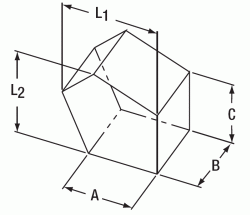
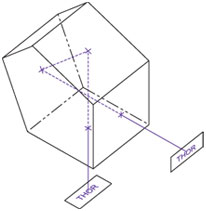
| Click on the red Document icon next to the item numbers below to access the Zemax file download. Our entire Zemax Catalog is also available. |
Selection Guide for Prisms
Thorlabs offers a wide variety of prisms, which can be used to reflect, invert, rotate, disperse, steer, and collimate light. For prisms and substrates not listed below, please contact Tech Support.
Beam Steering Prisms
| Prism | Material | Deviation | Invert | Reverse or Rotate | Illustration | Applications |
|---|---|---|---|---|---|---|
| Right Angle Prisms | N-BK7, UV Fused Silica, Calcium Fluoride, or Zinc Selenide | 90° | 90° | No | 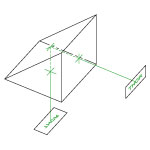 |
90° reflector used in optical systems such as telescopes and periscopes. |
| 180° | 180° | No | 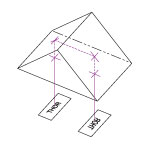 |
180° reflector, independent of entrance beam angle. Acts as a non-reversing mirror and can be used in binocular configurations. |
||
| TIR Retroreflectors (Unmounted and Mounted) and Specular Retroreflectors (Unmounted and Mounted) |
N-BK7 | 180° | 180° | No | 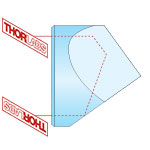 |
180° reflector, independent of entrance beam angle. Beam alignment and beam delivery. Substitute for mirror in applications where orientation is difficult to control. |
| Unmounted Penta Prisms and Mounted Penta Prisms |
N-BK7 | 90° | No | No | 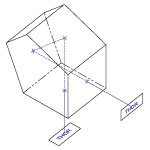 |
90° reflector, without inversion or reversal of the beam profile. Can be used for alignment and optical tooling. |
| Roof Prisms | N-BK7 | 90° | 90° | 180o Rotation | 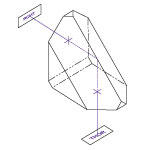 |
90° reflector, inverted and rotated (deflected left to right and top to bottom). Can be used for alignment and optical tooling. |
| Unmounted Dove Prisms and Mounted Dove Prisms |
N-BK7 | No | 180° | 2x Prism Rotation | 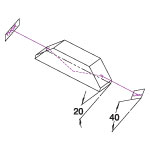 |
Dove prisms may invert, reverse, or rotate an image based on which face the light is incident on. Prism in a beam rotator orientation. |
| 180° | 180° | No | 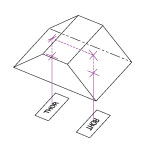 |
Prism acts as a non-reversing mirror. Same properties as a retroreflector or right angle (180° orientation) prism in an optical setup. |
||
| Wedge Prisms | N-BK7 | Models Available from 2° to 10° | No | No |  |
Beam steering applications. By rotating one wedged prism, light can be steered to trace the circle defined by 2 times the specified deviation angle. |
| No | No |  |
Variable beam steering applications. When both wedges are rotated, the beam can be moved anywhere within the circle defined by 4 times the specified deviation angle. |
|||
| Coupling Prisms | Rutile (TiO2) or GGG | Variablea | No | No | 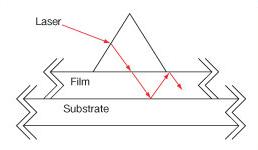 |
High index of refraction substrate used to couple light into films. Rutile used for nfilm > 1.8 GGG used for nfilm < 1.8 |
Dispersive Prisms
| Prism | Material | Deviation | Invert | Reverse or Rotate | Illustration | Applications |
|---|---|---|---|---|---|---|
| Equilateral Prisms | F2, N-F2, N-SF11, Calcium Fluoride, or Zinc Selenide |
Variablea | No | No | 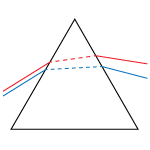 |
Dispersion prisms are a substitute for diffraction gratings. Use to separate white light into visible spectrum. |
| Dispersion Compensating Prism Pairs | Fused Silica, Calcium Fluoride, SF10, or N-SF14 | Variable Vertical Offset | No | No |  |
Compensate for pulse broadening effects in ultrafast laser systems. Can be used as an optical filter, for wavelength tuning, or dispersion compensation.
|
| Pellin Broca Prisms | N-BK7, UV Fused Silica, or Calcium Fluoride |
90° | 90° | No |  |
Ideal for wavelength separation of a beam of light, output at 90°. Used to separate harmonics of a laser or compensate for group velocity dispersion. |
Beam Manipulating Prisms
| Prism | Material | Deviation | Invert | Reverse or Rotate | Illustration | Applications |
|---|---|---|---|---|---|---|
| Anamorphic Prism Pairs | N-KZFS8 or N-SF11 |
Variable Vertical Offset | No | No | 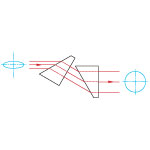 |
Variable magnification along one axis. Collimating elliptical beams (e.g., laser diodes) Converts an elliptical beam into a circular beam by magnifying or contracting the input beam in one axis. |
| Axicons (UVFS, ZnSe) | UV Fused Silica or Zinc Selenide |
Variablea | No | No |
Creates a conical, non-diverging beam with a Bessel intensity profile from a collimated source. |
Polarization Altering Prisms
| Prism | Material | Deviation | Invert | Reverse or Rotate | Illustration | Applications |
|---|---|---|---|---|---|---|
| Glan-Taylor, Glan-Laser, and α-BBO Glan-Laser Polarizers | Glan-Taylor: Calcite Glan-Laser: α-BBO or Calcite |
p-pol. - 0° s-pol. - 112°a |
No | No | 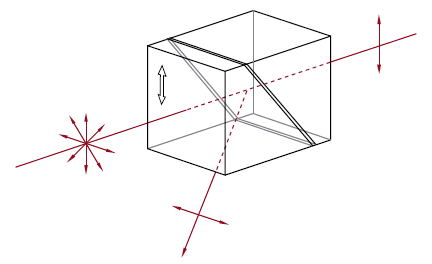 |
Double prism configuration and birefringent calcite produce extremely pure linearly polarized light. Total Internal Reflection of s-pol. at the gap between the prism while p-pol. is transmitted. |
| Rutile Polarizers | Rutile (TiO2) | s-pol. - 0° p-pol. absorbed by housing |
No | No | 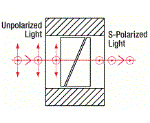 |
Double prism configuration and birefringent rutile (TiO2) produce extremely pure linearly polarized light. Total Internal Reflection of p-pol. at the gap between the prisms while s-pol. is transmitted.
|
| Double Glan-Taylor Polarizers | Calcite | p-pol. - 0° s-pol. absorbed by housing |
No | No | 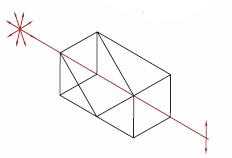 |
Triple prism configuration and birefringent calcite produce maximum polarized field over a large half angle. Total Internal Reflection of s-pol. at the gap between the prism while p-pol. is transmitted. |
| Glan Thompson Polarizers | Calcite | p-pol. - 0° s-pol. absorbed by housing |
No | No | 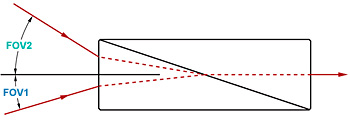 |
Double prism configuration and birefringent calcite produce a polarizer with the widest field of view while maintaining a high extinction ratio. Total Internal Reflection of s-pol. at the gap between the prism while p-pol. is transmitted. |
| Wollaston Prisms and Wollaston Polarizers |
Quartz, Magnesium Fluoride, α-BBO, Calcite, Yttrium Orthovanadate | Symmetric p-pol. and s-pol. deviation angle |
No | No | 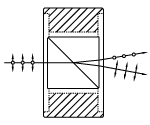 |
Double prism configuration and birefringent calcite produce the widest deviation angle of beam displacing polarizers. s-pol. and p-pol. deviate symmetrically from the prism. Wollaston prisms are used in spectrometers and polarization analyzers. |
| Rochon Prisms | Magnesium Fluoride or Yttrium Orthovanadate |
Ordinary Ray: 0° Extraordinary Ray: deviation angle |
No | No | 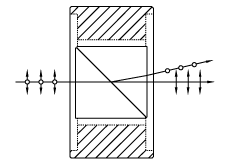 |
Double prism configuration and birefringent MgF2 or YVO4 produce a small deviation angle with a high extinction ratio. Extraordinary ray deviates from the input beam's optical axis, while ordinary ray does not deviate. |
| Beam Displacing Prisms | Calcite | 2.7 or 4.0 mm Beam Displacement | No | No | 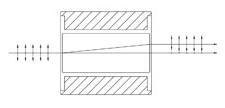 |
Single prism configuration and birefringent calcite separate an input beam into two orthogonally polarized output beams. s-pol. and p-pol. are displaced by 2.7 or 4.0 mm. Beam displacing prisms can be used as polarizing beamsplitters where 90o separation is not possible. |
| Fresnel Rhomb Retarders | N-BK7 | Linear to circular polarization Vertical Offset |
No | No | 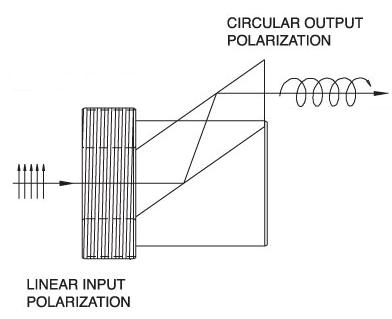 |
λ/4 Fresnel Rhomb Retarder turns a linear input into circularly polarized output. Uniform λ/4 retardance over a wider wavelength range compared to birefringent wave plates. |
| Rotates linearly polarized light 90° | No | No | 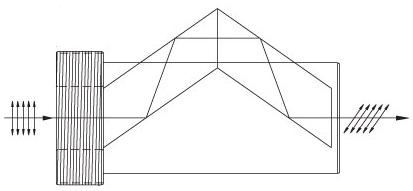 |
λ/2 Fresnel Rhomb Retarder rotates linearly polarized light 90°. Uniform λ/2 retardance over a wider wavelength range compared to birefringent wave plates. |
Beamsplitter Prisms
| Prism | Material | Deviation | Invert | Reverse or Rotate | Illustration | Applications |
|---|---|---|---|---|---|---|
| Beamsplitter Cubes | N-BK7 | 50:50 splitting ratio, 0° and 90° s- and p- pol. within 10% of each other |
No | No | 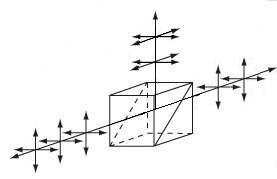 |
Double prism configuration and dielectric coating provide 50:50 beamsplitting nearly independent of polarization. Non-polarizing beamsplitter over the specified wavelength range. |
| Polarizing Beamsplitter Cubes | N-BK7, UV Fused Silica, or N-SF1 | p-pol. - 0° s-pol. - 90° |
No | No | 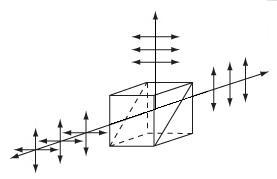 |
Double prism configuration and dielectric coating transmit p-pol. light and reflect s-pol. light. For highest polarization use the transmitted beam. |
| Posted Comments: | |
Robert Carlson
(posted 2022-09-14 09:58:12.073) Please quote a 20mm penta prism (ps932), with 1550nm ARC on the 20x20 entrance and exit faces. cdolbashian
(posted 2022-09-19 10:33:53.0) Thank you for reaching out to us with this custom request. For the fastest and most efficient turnaround on custom requests, please email Techsales@thorlabs.com. I have reached out to you directly to discuss your custom request directly. Jos Groote Schaarsberg
(posted 2021-09-13 16:33:32.583) I am looking at the penta prism with 42 mm clear aperture: PS934. Assuming that my beam diameter is also 42 mm: what is the requirement for alignment (angle of incidence at entrance surface) so that the beam passes the penta-prism without vignetting ? cdolbashian
(posted 2021-09-20 01:27:02.0) Thank you for contacting us at Thorlabs! Indeed, 42mm is the size needed to avoid any vingetting. For the PS934, the actual entrance face us a is a square with dimensions of 60x60mm. 42mm is the limit we recommend which will be projected and reflected with no vingetting. Robert Carlson
(posted 2021-08-10 16:03:18.12) Sorry - I just asked for quote for Penta with ARC coating on entrance and exit faces, for 1550nm.
That would be -C ARC coating: sorry, I said E04. Incorrect. Robert Carlson
(posted 2021-08-10 15:51:03.93) Please provide a quote for customized Penta Prisms that have E04 ARC for 1550nm on the entrance and exit faces:
PS931 (10x10mm faces, E04), qty 6
PS932 (20x20mm faces, E04), qty 3
Thank you! YLohia
(posted 2021-08-27 02:54:35.0) Hello, custom optics can be requested by emailing techsales@thorlabs.com. We will discuss the possibility of offering this directly. Anis Daami
(posted 2020-07-02 03:20:46.227) Hello,
is there any possibility to have pentaprisms without reflective coating ?
thank you YLohia
(posted 2020-07-02 09:13:56.0) Hello Anis, thank you for contacting Thorlabs. Custom optics can be requested by emailing your local Thorlabs Tech Support team (techsupport.fr@thorlabs.com in your case). We will reach out to you directly to discuss the possibility of offering this. apalmentieri
(posted 2009-11-02 16:53:30.0) A response from Adam at Thorlabs: John, we tested a unit and found a typical value for the angle of the output beam that is less than 1 arcmin. I will email with a little more information about out tests. John_R_Moore
(posted 2009-10-30 14:55:35.0) Part number: PS934 60mm penta prism, 58mm clear aperture.
What is the tolerance on the angle of the output beam?
Thanks,
John |
 Products Home
Products Home







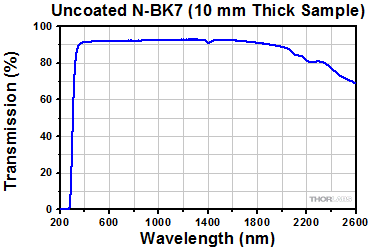


 Unmounted Penta Prisms
Unmounted Penta Prisms